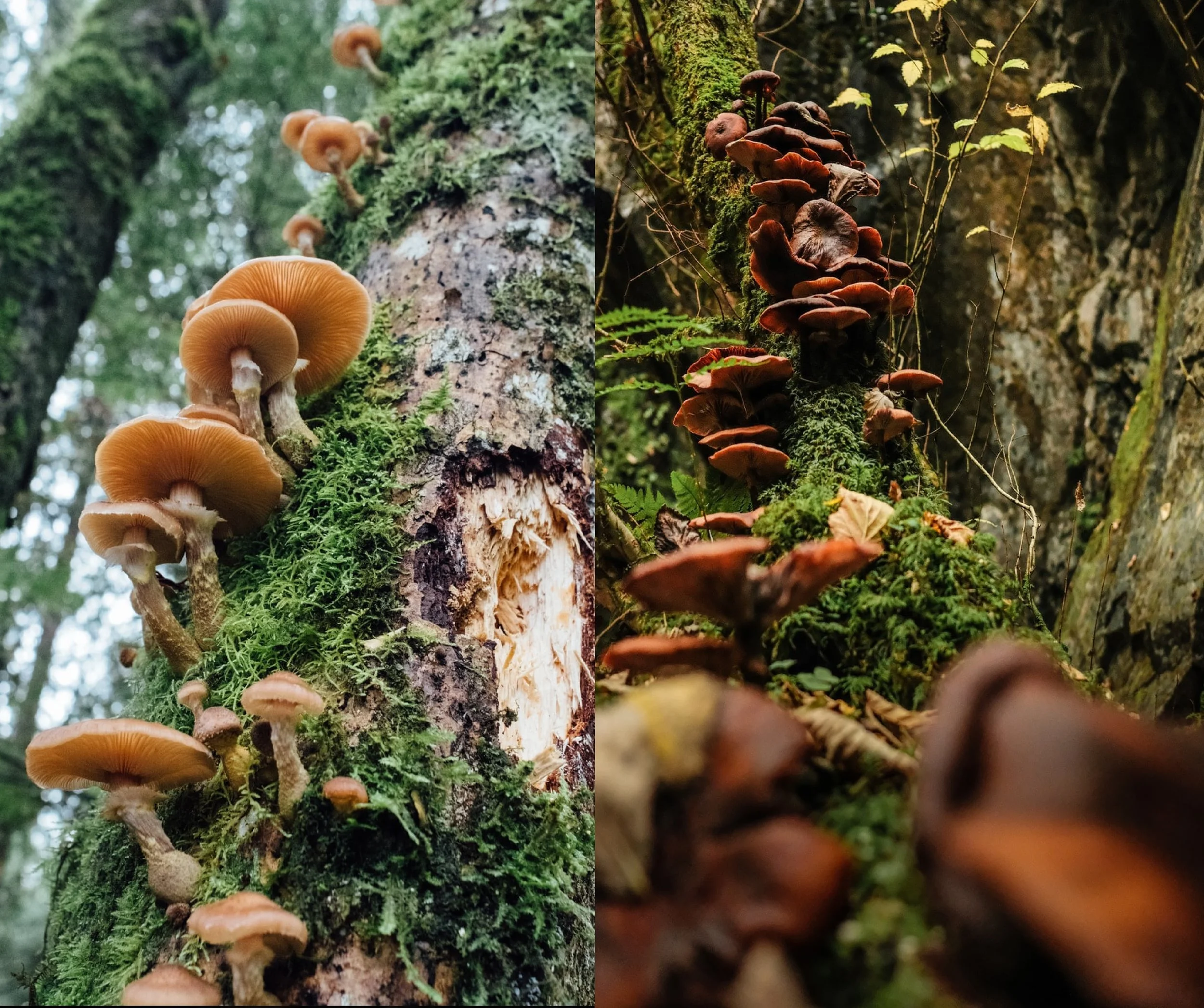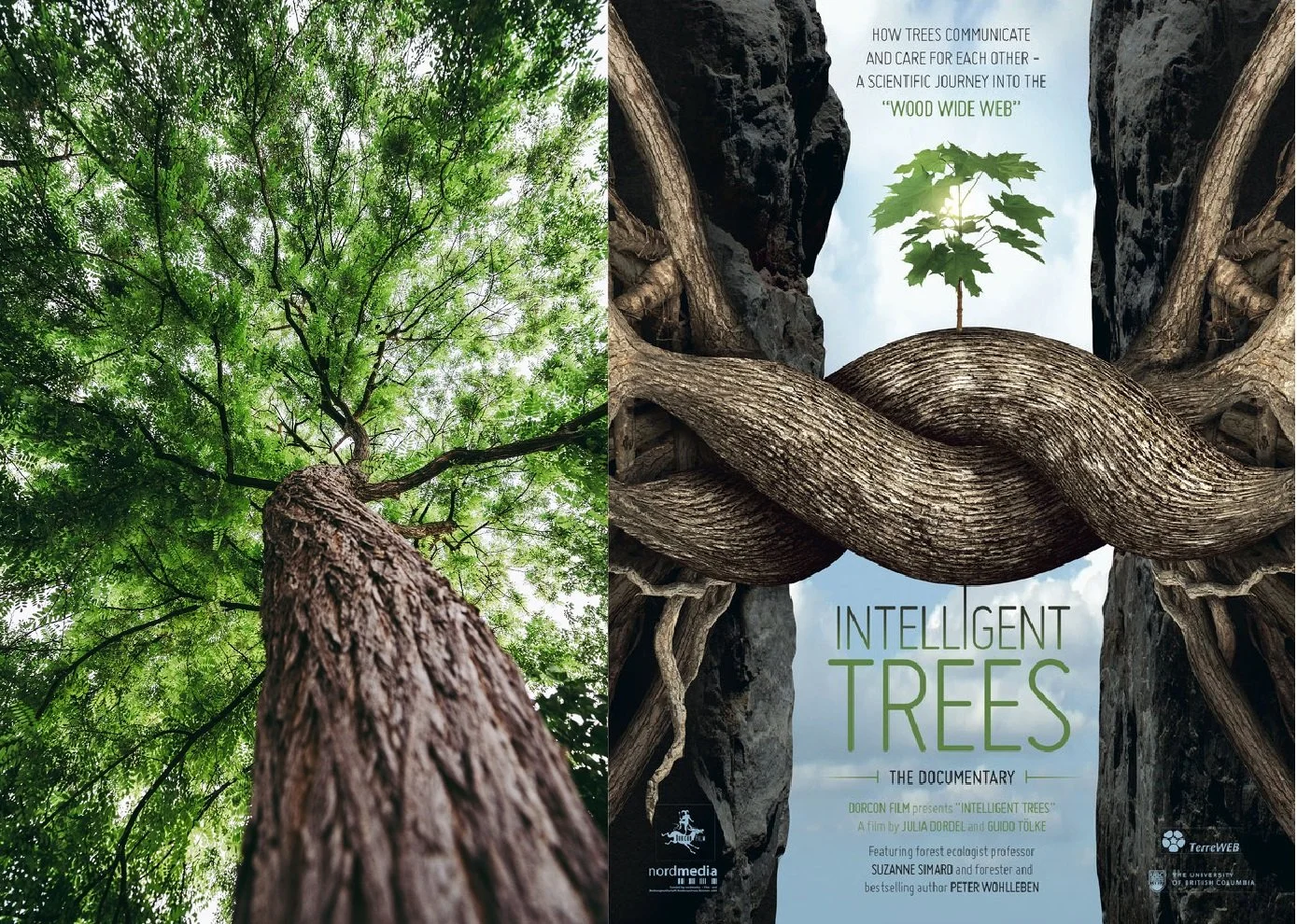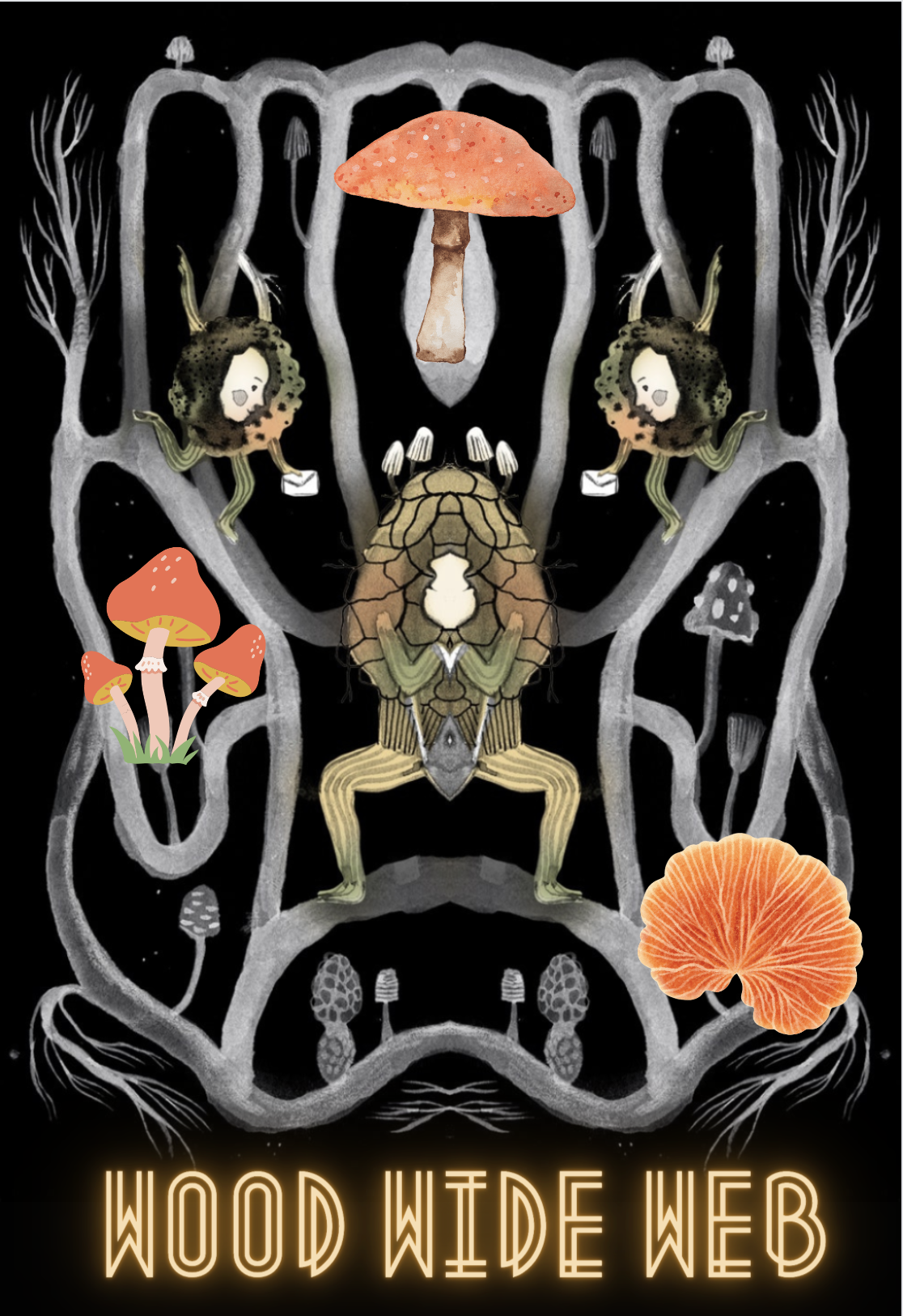Is Mycelium the Connective Tissue of Nature's Global Communication Network?
/The Wood Wide Web is a fascinating and complex underground network that connects trees and plants through a web of roots, fungi, and bacteria. This subterranean social network, nearly 500 million years old, plays a crucial role in the survival and communication of trees and plants within forests and woods.
Indications of 'Earth's natural internet' date back to the 1885 when the German botanist and mycologist Albert Bernhard Frank coined the term "mycorrhiza". The mycorrhizae [plural of a single cell mycorrhiza] exist as miniscule, amost microscopic threads called hyphae. These hyphae branch into a complicated web or patchwork called mycelium.
Mycorrhizal fungi are the key components of this network, forming symbiotic relationships with plant roots. These fungal filaments transport essential nutrients such as nitrogen, phosphorous, and water from the soil to the trees, in exchange for carbon-rich sugars produced by the plants. This mutually beneficial relationship allows trees to share resources, such as sugars, with younger or weaker trees, and even send their remaining resources back into the network when they are dying. Additionally, trees can communicate with each other about potential dangers, such as insect infestations, through this intricate web.
In the words of The National Forest Foundation: "Taken together, myecelium composes what’s called a “mycorrhizal network,” which connects individual plants together to transfer water, nitrogen, carbon and other minerals. German forester Peter Wohlleben dubbed this symbiotic network affecting about 90 percent of plant life on the planet -- including trees -- the “woodwide web.”
It is through the mycelium that trees 'communicate.'
In Santa Cruz, a 3-4 hour class at the Fungus Federation of Santa Cruz explores the fantastic world of fungi and the Wood Wide Web. It delves into the hidden underground networks that help trees communicate and the potential uses of fungi to solve pressing ecological problems like waste management and decomposition of discarded clothes.
Practical ecological solutions for our degrading planet demand our immediate attention and focused action. Yet a series of mind-blowing, scientific hypotheses about fungi and the interconnectedness of species in their world demands to be recognized and understood.
The study of the Wood Wide Web has raised questions about the concept of forests as single superorganisms, and the meaning of trading, sharing, or friendship among plants and other living species in the community. What is their relationship with humans?
The Wood Wide Web not only facilitates the exchange of goods between plants and fungi but also allows plants to distribute resources and send warnings to one another. For example, a plant under attack from aphids can warn a nearby plant to raise its defenses before the aphids reach it. This remarkable network challenges our understanding of the relationships between plants and fungi, as well as the very nature of forests and ecosystems.
When one becomes deeply invested in mycelium research, new scientific discoveries fling open doors not really closed — but never even imagined — about the world of mycelium, plants, trees, forests and other invested specifies in this ecosystem.
If we know that nature’s global communication network is alive and thriving, does that mean a form of language or intelligent species expression is at work?
Andrew Adamtzky's Research on Fungi Intelligence At Work in Wood Wide Web
Andrew Adamatzky is a renowned British computer scientist and a pioneer in the field of unconventional computing. He currently serves as the Director of the Unconventional Computing Laboratory and holds the position of Professor in Unconventional Computing at the Department of Computer Science and Creative Technologies, University of the West of England, Bristol, UK.
New research by Adamatzky, is provocative in raising a series of questions about intelligent life in the world of fungi. Adamatzky's study focuses on the electrical spiking activity in fungi, which is believed to be used for communication and information processing.
Within this quest for more scientific knowledge about fungi, Andrew Adamatzky employed tiny electrodes to record the rhythmic electrical impulses transmitted across the mycelium of four different species of fungi: enoki, split gill, ghost, and caterpillar fungi. He inserted tiny microelectrodes into substrates colonized by their hyphae threads, or mycelia, to study the electrical activity with a focus on spiking.
The results, published in Royal Society Open Science, revealed that these spikes often clustered into trains of activity, resembling vocabularies of up to 50 words. Interestingly, the distribution of these "fungal word lengths" closely matched those of human languages.
The patterns created by the impulses were measurable in amplitude, frequency and duration. Perhaps of enormous consequence is that, when diagrammed, the impulses bore a striking resemblence to mathematical schematics of human speech. Adamatzky believes that he may have discovered the foundation of a fungal language of about 50 words that are also organized into sentences.
The complexity of the possible 'language' used by different fungi species varied, with the split gill fungus [Schizophyllum commune] using the most complicated communication of those tested.
“I see the mycelium as the Earth's natural Internet, a consciousness with which we might be able to communicate. Through cross-species interfacing, we may one day exchange information with these sentient cellular networks. Because these externalized neurological nets sense any impression upon them, from footsteps to falling tree branches, they could relay enormous amounts of data regarding the movements of all organisms through the landscape.”
― Paul Stamets, Mycelium Running: How Mushrooms Can Help Save the World
The possibility that fungi have their own electrical language to communicate information about both opportunity and resources nearby, and also danger, could signal a vast underground intelligence network that covers much of the globe.
The date when mushrooms — and this potential underground mycelium network — first appeared on planet Earth has quickly moved from 500 million years ago to 800 million years.
Exactly how these communication networks work, and the role of fungal mycelia in creating a transmission system is not understood. Adamatsky and partner researchers concluded: "What we can take from the research is that electrical spikes are, potentially, a new mechanism for transmitting information across fungal mycelia, with important implications for our understanding of the role and significance of fungi in ecosystems."



